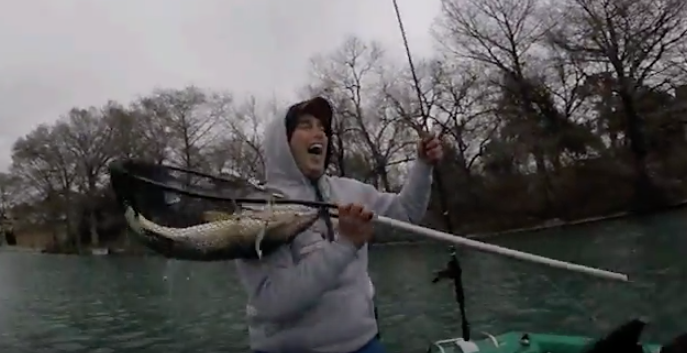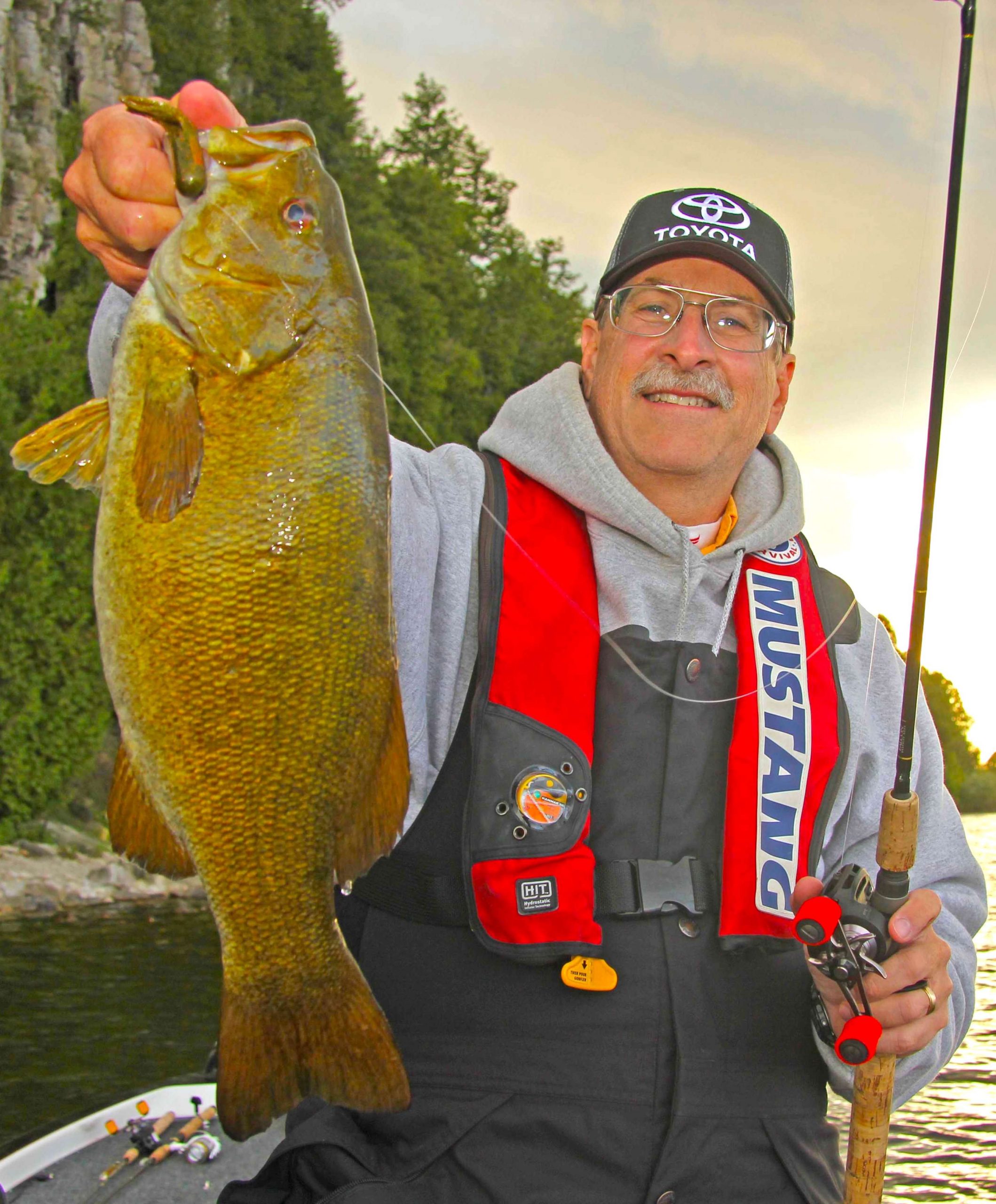
As the world renowned Toyota ShareLunker program approached its 30th year, the staff at Texas Parks and Wildlife Department saw the need to give the program a fresh look and implement some big ideas. Now, for the first time, anglers who reel in any largemouth bass at least 8 pounds or 24 inches can participate simply by entering their lunker catch information.
On Jan. 1, Aaron Hernandez caught the first bass of 2018 eligible for the new program. Texas B.A.S.S. Nation conservation Director Tim Cook was on hand that day and produced this video to document the catch. Hernandez, a member of the Canyon Bass Club of San Marcos, Texas, and Cook decided to go fish on New Year’s Day to try and catch the first ShareLunker of 2018. The strongest cold front of the year rolled in a day prior that sent temperatures into the 20s. They chose Lake Dunlap for its potential and ability to fish despite a strong north wind. Hernandez caught the fish on a Yum A-Rig in 15 feet of water on a river channel ledge. The fish was 9 pounds, 1 ounce and 25-1/2 inches long. The fish was submitted via cellphone and was officially certified as the first ShareLunker for 2018.
Bigger Better Bass is not just a catch phrase, it is the focus of the program. Since 1986, TPWD’s popular Toyota ShareLunker program has been partnering with anglers to promote and enhance bass fishing in Texas. Previously, bass submitted had to be 13 pounds or larger and caught during certain months of the year. Beginning in 2018, anglers have new opportunities to partner with ShareLunker and be recognized for their achievement and contributions all year long. Anglers complete entry requirements online or in the new ShareLunker mobile app for iPhone or Android during the year-long season (Jan. 1 to Dec. 31). Fish will be recognized in four classes – ShareLunker 8-9.99 pounds, Elite ShareLunker 10-12.99 pounds, Legend ShareLunker 13-plus that is electronically submitted, and finally, The Legacy ShareLunker 13-plus pounds and turned into TPWD between the months of January through March. There will even be an opportunity to collect scale samples to provide DNR information which will tell biologists a lot about those fish. TPWD hopes the result will be greater angler participation and more data collected about these big bass.
The original program was not without its critics. Some anglers were concerned that taking the giant fish out of the lakes where it was caught might hurt the fishery. In reality, those fish and the anglers that donated them made an incredible contribution to the future of bass fishing in Texas. Most of the fish donated to the program were returned to the lake where they were caught and several of those fish were caught and donated a second time. Through the work of TPWD staff and the study of big fish genetics, the department learned much about what it takes to raise big fish and the genetics behind it. In the future TPWD will be converting all of its hatchery brood fish to ShareLunker offspring thanks to the contributions made by anglers. That is how you make Better Bigger Bass.





